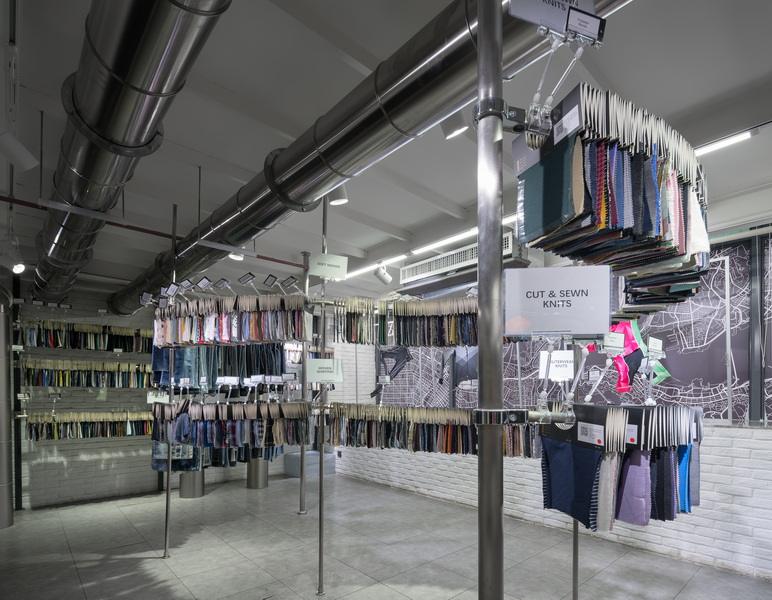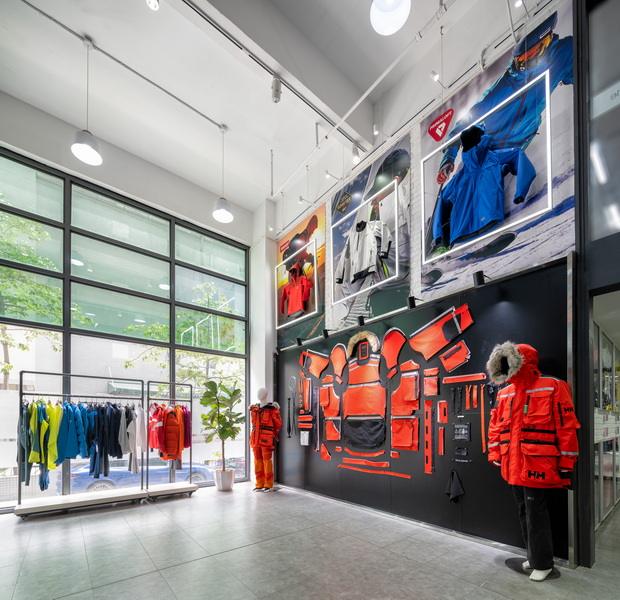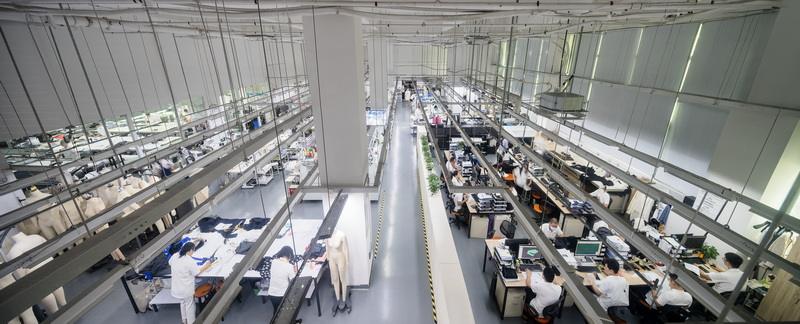Content Menu
● The Rise of Wide Leg Yoga Pants in Sustainable Fashion
● Sustainable Materials in Wide Leg Yoga Pants
>> Organic Cotton and Lyocell Blends
>> Recycled and Biodegradable Fibers
● Eco-Friendly Manufacturing Processes
>> Closed-Loop and Zero-Waste Production
>> Ethical Labor and Fair Trade Practices
>> Localized Production for Reduced Carbon Footprint
● Technical Innovations in Product Development
>> Fabric Performance Enhancements
>> Design for Longevity and Versatility
>> Color and Dyeing Techniques
● Innovations in Sustainable Textile Technologies
● Supply Chain Insights for Sustainable Wide Leg Yoga Pants
>> Material Sourcing Transparency
>> Multi-Country Manufacturing Networks
>> Certifications and Compliance
● The Role of Innovation in Supply Chain Optimization
● Challenges in Sustainable Manufacturing
● Consumer Engagement for Sustainability
>> Consumer Impact and Education
>> Encouraging Circularity Through Consumer Engagement
● Future Trends in Sustainable Activewear
● Our Commitment to Sustainable Wide Leg Yoga Pants
● FAQ
>> 1. What materials are commonly used in eco-friendly wide leg yoga pants?
>> 2. How do sustainable manufacturing processes reduce environmental impact?
>> 3. Are eco-friendly wide leg yoga pants durable for regular use?
>> 4. How does localized production contribute to sustainability?
>> 5. What certifications should I look for when buying sustainable wide leg yoga pants?
Wide leg yoga pants have become a staple in activewear, blending comfort, style, and functionality. As consumer demand for sustainable fashion grows, the manufacturing of wide leg yoga pants is evolving to meet eco-friendly standards without compromising quality or performance. This article explores sustainable manufacturing practices in the production of wide leg yoga pants, highlighting technical innovations, supply chain insights, and product development expertise that demonstrate our commitment to environmental responsibility.

The Rise of Wide Leg Yoga Pants in Sustainable Fashion
Wide leg yoga pants offer a relaxed fit that enhances freedom of movement and breathability, making them ideal for yoga, meditation, and everyday wear. Unlike traditional tight leggings, wide leg designs reduce fabric stress and increase comfort, which aligns well with sustainability goals by extending garment life and reducing waste. The growing popularity of wide leg yoga pants has prompted brands and manufacturers to rethink materials and production methods to reduce environmental impact. Sustainable fabrics such as organic cotton, lyocell (TENCEL™), bamboo, and recycled fibers are now commonly used to create wide leg yoga pants that are both eco-friendly and high-performing.
Sustainable Materials in Wide Leg Yoga Pants
Organic Cotton and Lyocell Blends
Organic cotton is cultivated without synthetic pesticides or fertilizers, supporting healthier ecosystems and reducing water use compared to conventional cotton. When blended with lyocell, a fiber derived from sustainably harvested eucalyptus trees through a closed-loop process, the resulting fabric is soft, breathable, and moisture-wicking—ideal for yoga apparel. For example, Urban Goddess’s Flow Wide Yoga Pants utilize a blend of 48% lyocell and 48% organic cotton with 4% lycra for stretch. This combination offers natural antibacterial properties and dry-fit performance, enhancing comfort during practice while maintaining sustainability credentials.
Bamboo Fabric
Bamboo is another sustainable fiber gaining traction in wide leg yoga pants. Bamboo grows rapidly without pesticides and requires less water than cotton. Bamboo jersey knit fabric used in wide leg yoga pants provides softness, breathability, and excellent moisture management, making it perfect for warm weather and casual wear.
Recycled and Biodegradable Fibers
Some brands incorporate recycled nylon and polyester to reduce reliance on virgin petrochemical fibers. Innovations like CiCLO technology accelerate biodegradability of synthetic fibers, helping reduce long-term pollution. However, natural fibers remain preferred for their biodegradability and skin-friendly properties.
Eco-Friendly Manufacturing Processes
Closed-Loop and Zero-Waste Production
Sustainable manufacturers adopt closed-loop systems that recycle water and solvents used in fiber processing, minimizing waste discharge and environmental contamination. For instance, TENCEL lyocell production uses a closed-loop process that recycles 99% of chemicals and water, significantly lowering environmental footprint. Zero-waste cutting techniques and pattern optimization reduce fabric scraps during garment assembly. This approach is especially important for wide leg yoga pants, where fabric usage is higher due to the loose fit.
Ethical Labor and Fair Trade Practices
Sustainability extends beyond materials to include social responsibility. Brands committed to eco-friendly wide leg yoga pants ensure fair wages, safe working conditions, and prohibit forced or child labor in their supply chains. Certifications such as GOTS (Global Organic Textile Standard) and Fair Trade verify these ethical standards.
Localized Production for Reduced Carbon Footprint
Localized manufacturing reduces transportation emissions and improves supply chain transparency. Some brands produce wide leg yoga pants closer to their primary markets, such as in Canada or Vietnam, to minimize shipping distances and carbon footprint while maintaining quality control.
Technical Innovations in Product Development
Fabric Performance Enhancements
Sustainable wide leg yoga pants now incorporate technical features such as moisture-wicking, antibacterial properties, and four-way stretch without compromising eco-friendliness. The use of natural fibers like lyocell and organic cotton inherently provides breathability and odor resistance, while small percentages of spandex or elastane ensure flexibility.
Design for Longevity and Versatility
Wide leg yoga pants are designed to be durable and versatile, suitable for yoga, Pilates, lounging, or casual outings. Durable stitching methods like flatlock seams prevent chafing and increase garment lifespan. Additionally, free size or inclusive sizing accommodates diverse body types, promoting longer garment use and reducing waste.
Color and Dyeing Techniques
Sustainable brands use low-impact dyes and natural colorants to reduce water pollution and chemical use. Some employ digital printing to minimize fabric waste and energy consumption during coloration.
Innovations in Sustainable Textile Technologies
Recent advancements in textile technology have significantly contributed to the sustainability of wide leg yoga pants. Innovations such as bio-based dyes derived from natural sources like fruits and vegetables reduce the reliance on synthetic chemicals, which are harmful to the environment. Additionally, the development of waterless dyeing technologies minimizes water consumption and pollution, a critical factor in textile manufacturing. Nanotechnology is also being explored to enhance fabric properties without compromising sustainability. For example, nano-coatings can provide water resistance and antibacterial features while using eco-friendly materials, extending the lifespan of wide leg yoga pants and reducing the need for frequent washing.
Supply Chain Insights for Sustainable Wide Leg Yoga Pants
Material Sourcing Transparency
Transparency in sourcing is critical for sustainability. Brands disclose their material origins, such as organic cotton farms or lyocell fiber producers, ensuring traceability and adherence to environmental standards.
Multi-Country Manufacturing Networks
To balance cost, quality, and sustainability, wide leg yoga pants are often produced in multiple countries with specialized expertise. For example, China and Vietnam provide advanced textile manufacturing capabilities, while localized production in North America supports rapid delivery and reduced emissions.
Certifications and Compliance
Certifications like GOTS, OCS (Organic Content Standard), and Fair Trade ensure that wide leg yoga pants meet stringent environmental and social criteria throughout the supply chain. These certifications help consumers make informed choices and encourage manufacturers to maintain high standards.

The Role of Innovation in Supply Chain Optimization
Innovative supply chain management techniques are playing a crucial role in enhancing the sustainability of wide leg yoga pants. Technologies such as blockchain provide transparency and traceability, allowing brands and consumers to verify the ethical sourcing and environmental impact of materials. Automation and AI-driven logistics optimize inventory and reduce waste, ensuring that production aligns closely with demand. This reduces overproduction, a significant issue in the fashion industry, and minimizes the carbon footprint associated with excess inventory storage and disposal.
Challenges in Sustainable Manufacturing
Despite progress, sustainable manufacturing faces several challenges. The cost of organic and recycled materials remains higher than conventional fabrics, which can impact pricing and accessibility. Supply chain complexities, including verifying the authenticity of sustainable claims and ensuring ethical labor practices, require rigorous oversight and transparency. Moreover, balancing performance and sustainability is an ongoing challenge. Consumers expect high-performance activewear that is durable, flexible, and comfortable, which sometimes necessitates blending natural fibers with synthetic ones. Manufacturers must innovate to maintain this balance without compromising environmental goals.
Consumer Engagement for Sustainability
Consumer Impact and Education
Educating consumers about the benefits of sustainable wide leg yoga pants is essential for driving demand and encouraging responsible purchasing decisions. Transparency in product labeling, including detailed information about materials, manufacturing processes, and certifications, empowers consumers to make informed choices. Brands are increasingly using digital platforms and social media to share stories about their sustainability journey, highlighting the positive environmental and social impacts of their products. This engagement fosters brand loyalty and supports the broader movement toward sustainable fashion.
Encouraging Circularity Through Consumer Engagement
Brands are also focusing on encouraging circularity by engaging consumers in recycling and upcycling programs. Offering incentives for returning used wide leg yoga pants for recycling or refurbishment helps close the loop and reduces landfill waste. Educational campaigns that promote care instructions to extend garment life and encourage mindful consumption further support sustainability goals.
Future Trends in Sustainable Activewear
Looking ahead, the activewear industry is poised to embrace circular economy principles more fully. This includes designing wide leg yoga pants for recyclability, implementing take-back programs, and using biodegradable materials that break down safely at the end of their lifecycle. Technological integration, such as smart textiles that monitor health metrics or adjust to environmental conditions, is expected to grow. Ensuring these innovations align with sustainability principles will be crucial. Collaborations between brands, suppliers, and environmental organizations will likely increase, fostering innovation and setting higher industry standards for sustainability.
Our Commitment to Sustainable Wide Leg Yoga Pants
We are dedicated to producing wide leg yoga pants that embody sustainability at every stage—from raw material selection and ethical manufacturing to innovative design and supply chain transparency. Our products feature:
Eco-friendly fabrics such as organic cotton, lyocell, and bamboo
Closed-loop and zero-waste processing methods
Ethical labor practices and fair trade compliance
Localized production to reduce carbon footprint
Durable, breathable, and comfortable designs with technical performance
Certifications verifying environmental and social responsibility
By integrating these innovative practices and engaging consumers, the industry moves closer to a truly sustainable future for wide leg yoga pants, benefiting both people and the planet.
Conclusion
Sustainable manufacturing of wide leg yoga pants represents a vital shift in the activewear industry toward environmental stewardship and social responsibility. Through the use of organic and recycled materials, innovative eco-friendly production processes, and ethical supply chain management, our wide leg yoga pants offer unparalleled comfort, style, and sustainability. Choosing our eco-friendly wide leg yoga pants means investing in quality apparel that respects both your body and the planet.
We invite you to join us in this commitment to sustainability. Contact us today to learn more about our products and how we can support your business or personal activewear needs with eco-conscious wide leg yoga pants.

FAQ
1. What materials are commonly used in eco-friendly wide leg yoga pants?
Eco-friendly wide leg yoga pants often use organic cotton, lyocell (TENCEL™), bamboo, and recycled fibers. These materials are biodegradable, sustainably sourced, and provide breathability and comfort.
2. How do sustainable manufacturing processes reduce environmental impact?
Sustainable manufacturing employs closed-loop systems that recycle water and chemicals, zero-waste cutting techniques, and low-impact dyes. These methods minimize pollution, waste, and resource consumption during production.
3. Are eco-friendly wide leg yoga pants durable for regular use?
Yes, sustainable wide leg yoga pants are designed with durable fabrics and stitching methods like flatlock seams. They maintain shape and color through frequent washing, ensuring long-lasting wear.
4. How does localized production contribute to sustainability?
Localized production reduces transportation emissions, shortens delivery times, and allows better quality control. Producing closer to the consumer market decreases the overall carbon footprint of the supply chain.
5. What certifications should I look for when buying sustainable wide leg yoga pants?
Look for certifications such as GOTS (Global Organic Textile Standard), OCS (Organic Content Standard), and Fair Trade. These verify that the product meets strict environmental and ethical standards throughout its lifecycle.
Hot Tags:
Eco Yoga Manufacturing, Sustainable Production Yoga Pants, Green Apparel Factory, Organic Yoga Clothing, Responsible Yoga Wear, Low Impact Manufacturing, Ethical Yoga Fashion, Carbon-Conscious Apparel, Recycled Yoga Production, Sustainable Supply Chain
